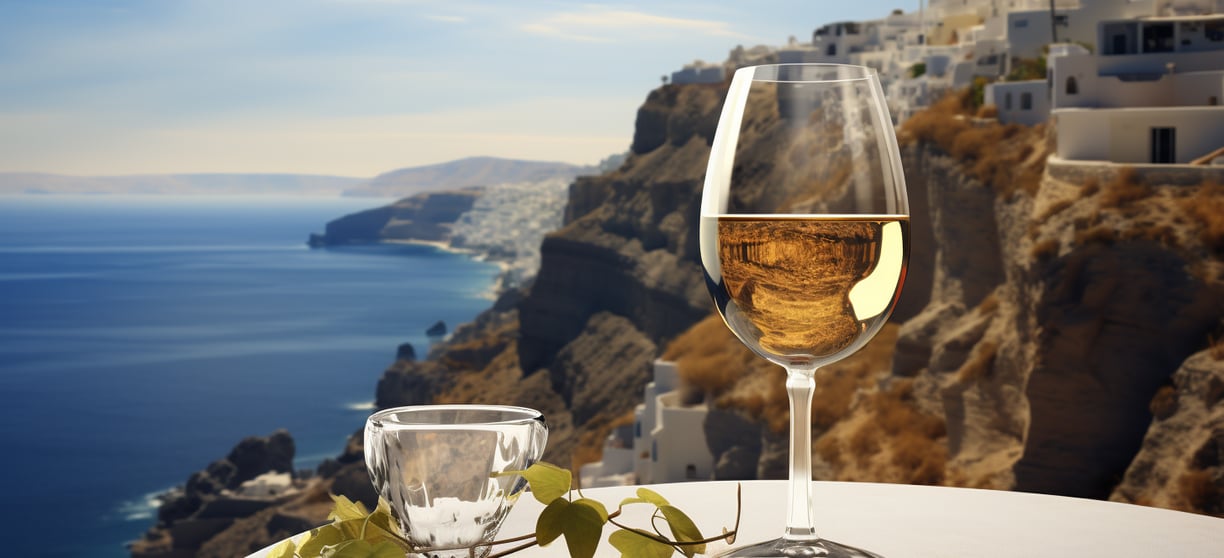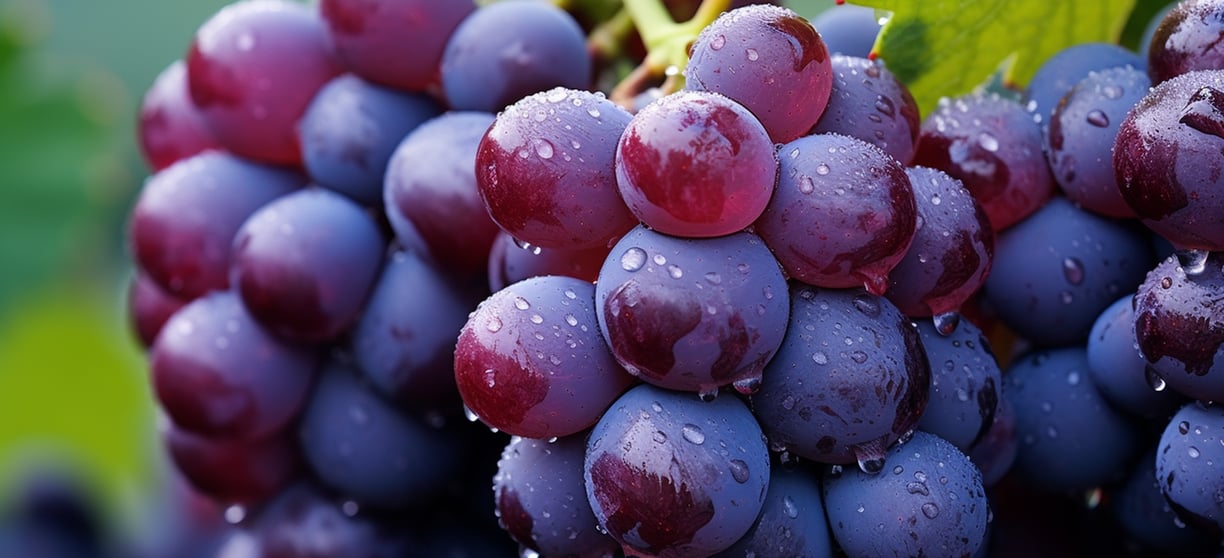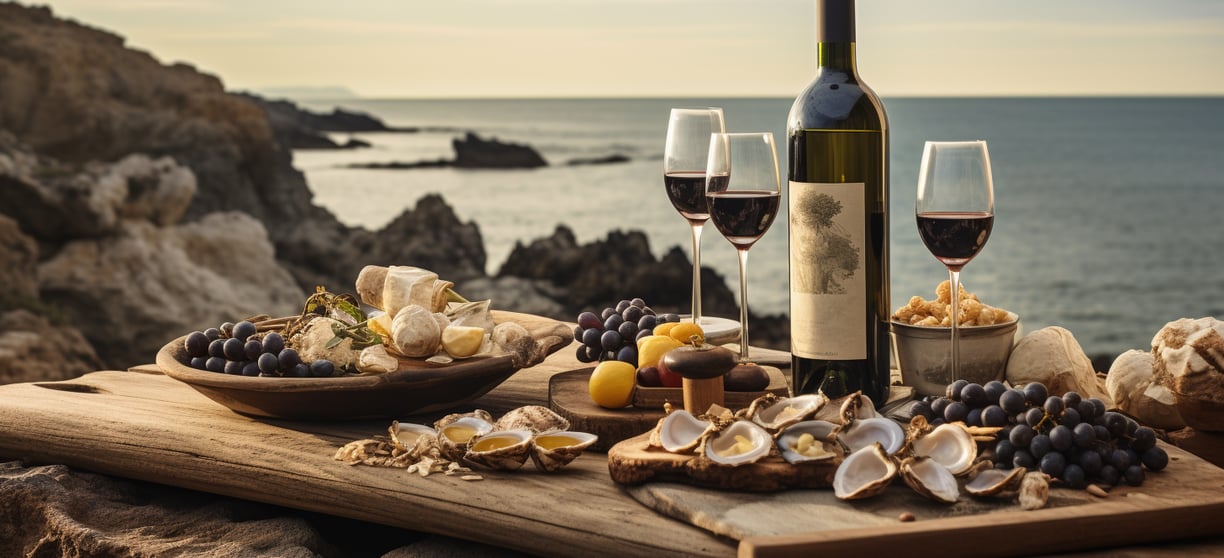Coastal Wines: The Influence of the Sea on Terroir

Welcome to the world of coastal wines, where the sea's influence on terroir creates unique and captivating flavors. In this article, we will explore how the coastal breeze, the mineral-rich soil, and the maritime climate shape the characteristics of these exquisite wines. Join us on a journey through the enchanting coastal vineyards and discover the art of appreciating these maritime gems.
Understanding Terroir: A Brief Overview
Terroir, a term that encapsulates the environmental factors that impact wine production, plays a crucial role in the flavors and aromas we experience in a bottle of wine. The sea acts as a powerful influencer, leaving its mark on the very essence of coastal wines. Let's delve into the specific elements that contribute to this captivating phenomenon.
The Role of Climate in Shaping Terroir
Coastal regions boast a unique microclimate, continuously bathed in ocean winds and mist. The moderate temperatures and extended growing seasons allow grapes to ripen gradually, resulting in well-balanced wines with vibrant flavors. From the sun-soaked vineyards of California's Central Coast to the mist-shrouded valleys of New Zealand's Marlborough, the climate dances harmoniously with the sea, leaving its imprint on every sip.
Along the Central Coast of California, the cool marine influence from the Pacific Ocean creates a foggy morning blanket that slowly dissipates as the sun rises. This natural phenomenon, known as the marine layer, provides relief from the intense heat of the sun, allowing the grapes to develop complex flavors while retaining their natural acidity. The ocean breezes also help to regulate temperature, preventing extreme fluctuations that could stress the vines.
In New Zealand's Marlborough region, the sea breezes play a vital role in shaping the terroir. The cool winds from the Pacific Ocean and the Marlborough Sounds create a unique microclimate that is ideal for growing Sauvignon Blanc. The combination of warm days and cool nights, along with the influence of the sea, contributes to the distinctive tropical fruit and herbaceous flavors found in Marlborough Sauvignon Blanc.
The Impact of Soil Composition on Terroir
The coastal terroir possesses an incredible mosaic of soils, rich in minerals that stem from ancient underwater deposits. The blending of sand, limestone, and clay creates a nourishing foundation for the vine's roots, infusing the wines with distinct characteristics. Whether it's the chalky cliffs of Champagne, the volcanic slopes of Sicily's Mt. Etna, or the ancient seabeds of the Portuguese Douro Valley, the soil whispers tales of the sea in every sip.
In the Champagne region of France, the chalky soil is a defining characteristic of the terroir. This unique soil composition, known as "terre de craie," provides excellent drainage while retaining moisture, allowing the vines to thrive. The chalk also imparts a subtle minerality to the wines, adding complexity and finesse.
On the volcanic slopes of Mt. Etna in Sicily, the soil is a blend of volcanic ash, sand, and lava rocks. The volcanic terroir not only lends a distinct flavor profile to the wines but also contributes to the wine's structure and aging potential. The mineral-rich soil, combined with the influence of the nearby Mediterranean Sea, creates a unique environment for grape cultivation.
In the Douro Valley of Portugal, the vineyards are planted on ancient seabeds that were formed millions of years ago. The schist and granite soils, mixed with layers of limestone, provide excellent drainage and mineral content. The wines produced in this region showcase a beautiful balance of fruit, acidity, and minerality, reflecting the terroir's maritime past.

Notable Coastal Wine Regions Around the World
Embark on a journey to some of the world's most renowned coastal wine regions, where terroir and the sea unite to create vinous delights.
The Charm of California's Coastal Vineyards
California's scenic coastline is dotted with exceptional vineyards. From the fog-kissed valleys of Sonoma and Mendocino to the iconic Santa Barbara County, the Pacific Ocean's proximity shapes the wines into exquisite expressions of the land. Raise a glass of Pinot Noir as you breathe in the salty air, and let the beauty of the coast envelop your senses.
The Allure of Australia's Maritime Wine Regions
Down under, Australia's coastal regions provide a haven for wine lovers. The cool-climate vineyards of Mornington Peninsula, with its breathtaking views of Port Phillip Bay, produce elegant Chardonnay and Pinot Noir that showcase the area's maritime fingerprints. Further west, the Margaret River region presents a tapestry of alluring wines, where the Indian Ocean's influence intertwines harmoniously with the vines.
The Art of Tasting and Appreciating Coastal Wines
Every sip of coastal wine is an exploration of the sea's influence. Let's embark on a sensory voyage and discover the nuances these wines unravel.
Identifying the Sea's Influence in Wine Aromas and Flavors
As you raise the glass to your nose, breathe in the captivating aromas that dance before you. Coastal wines reveal delicate notes of sea spray, coastal herbs, and hints of saline depths. With each sip, taste the essence of the ocean, intertwined with layers of fruit and earth. Explore the intricacies of coastal Chardonnay, the bracing minerality of Assyrtiko, or the vibrant acidity of Vermentino, and let your palate set sail.
Pairing Coastal Wines with Food
Coastal wines offer a kaleidoscope of pairing possibilities. The natural acidity and vibrant flavors make them an excellent companion for fresh seafood, from buttery lobster to briny oysters. Are you craving a taste of the Mediterranean? Pair a crisp white or a robust red coastal wine with freshly grilled fish, drizzled in olive oil, and adorned with sun-ripened tomatoes.

The Unique Characteristics of Coastal Wines
Coastal wines bear a distinct stamp of their maritime origins. Let's dive into the two pillars that give these wines their individuality – the influence of sea breezes on vine growth and the salinity and mineral content that the sea bestows upon their character.
The Influence of Sea Breezes on Vine Growth
The gentle caress of sea breezes plays a vital role in the development of coastal vineyards. As the wind sweeps through the rows of grapevines, it imparts a natural pruning effect, allowing for controlled growth and optimal sun exposure. This unique interaction between the vines and the oceanic winds creates a harmonious dance, resulting in grapes with concentrated flavors and nuanced complexity.
Imagine standing in the sun-kissed vineyards of Santorini's Assyrtiko, where the sea breeze carries the essence of the Aegean Sea. The vines, resilient against the ocean's influence, produce grapes that reflect the island's volcanic terroir. With each sip of Assyrtiko, you can taste the briny notes of the sea, intertwined with the vibrant acidity and citrus flavors.
Similarly, the cascading terraces of Italy's Cinque Terre are a testament to the symbiotic relationship between the vine and the sea. Here, the vineyards cling to the rugged cliffs, exposed to the salty mist that envelops the coastal landscape. The sea breeze, gently rustling the leaves, shapes the growth of the vines, resulting in wines that capture the essence of the Ligurian coastline.
Salinity and Mineral Content: Gifts from the Sea
Coastal vineyards are blessed with saline-laden air and water, inviting the sea's essence into the wines. The grapes absorb the ocean's rich mineral content, infusing the wine with a distinctive salinity, brimming with character.
Picture yourself in the vineyards of Chablis, where the chalky soil reveals the sea's story. The vines, deeply rooted in the ancient seabed, draw up the minerals and brackish flavors that define the region's renowned white wines. With their crisp acidity and flinty undertones, Chablis wines transport you to the coastal cliffs of northern France.
Meanwhile, in South Africa's Walker Bay, the vineyards stretch along the coastline, capturing the cool ocean breezes. The wines produced here showcase a unique fusion of maritime influence and terroir. As you sip a glass of Walker Bay Chardonnay, you can taste the sea spray mingling with the tropical fruit flavors, creating a captivating oceanic voyage for the senses.
Coastal wines, with their connection to the sea, offer a sensory journey that goes beyond the glass. They embody the spirit of the coastal terroir, reflecting the influence of sea breezes and the gifts of salinity and minerals bestowed upon the grapes. Each sip is an invitation to explore the coastal landscapes, to feel the ocean's touch, and to savor the unique characteristics that make these wines truly exceptional.
The Future of Coastal Wine Production
Coastal vineyards face both challenges and opportunities as they continue to craft wines inspired by the sea. Let's explore the path ahead and celebrate the sustainable practices that protect these precious coastal landscapes.
Challenges and Opportunities for Coastal Vineyards
Climate change poses a threat to vineyards worldwide, with coastal regions being particularly vulnerable. Rising sea levels and more unpredictable weather patterns necessitate innovative strategies to preserve these magnificent terroirs. From adopting cover crop techniques to employing advanced irrigation systems, vineyards around the globe are embracing sustainable practices to ensure the future of coastal wine production.
Sustainable Practices in Coastal Wine Production
Many coastal vineyards are leading the charge in sustainable viticulture. From organic and biodynamic farming methods to energy-efficient wineries, these measures help protect fragile coastal ecosystems while producing exceptional wines. By supporting these environmentally conscious wineries, we can savor the taste of the sea with a clear conscience.
In conclusion, coastal wines bear witness to the sea's profound influence on terroir. They encapsulate the essence of the coast, offering a taste of the ocean's majesty in every sip. Whether you sip a glass on a private island beach or in a bustling coastal city, let these wines transport you to the captivating world where land meets sea. Plan your trip, embark on a journey, and unlock the secrets of coastal wines. Cheers to the ocean's magnificent gift!